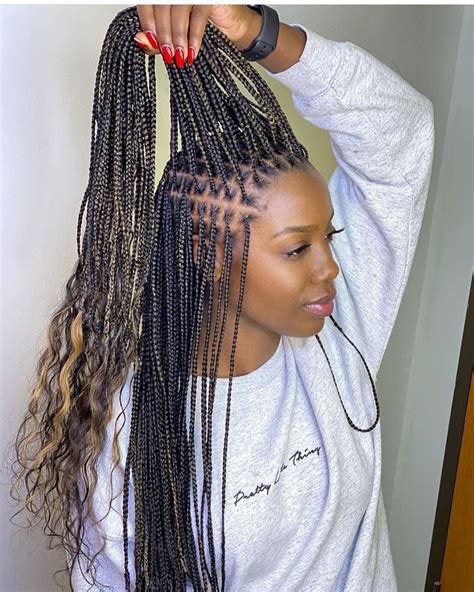Introduction
Knotless braids have become increasingly popular in recent years, offering a protective and stylish alternative to traditional box braids. Unlike box braids, which require the use of knots at the root, knotless braids are created without any knots, resulting in a more natural and seamless look.

Benefits of Knotless Braids
- Protective: Knotless braids help to protect natural hair from damage caused by heat, chemicals, and mechanical styling.
- Versatile: Knotless braids can be styled in a variety of ways, including buns, ponytails, updos, and more.
- Low-maintenance: Knotless braids can last for weeks with proper care, making them a low-maintenance protective style.
- Natural and seamless: The lack of knots at the root gives knotless braids a natural and seamless appearance that blends well with natural hair.
- Comfortable to wear: Knotless braids are generally more comfortable to wear than box braids, as they do not put tension on the scalp.
Step-by-Step Guide to Creating Knotless Braids
Materials:
- Hair extensions (such as braiding hair or pre-stretched hair)
- Comb
- Hair clips
- Braid spray (optional)
Instructions:
- Section hair into small squares: Divide the hair into small squares, about 1 inch by 1 inch.
- Add hair extensions: Take a small section of hair extensions and attach it to the base of the natural hair square.
- Hold the hair extensions and natural hair together: Hold the hair extensions and natural hair together tightly with your fingers.
- Start braiding: Braid the hair using a three-strand braid, starting with the hair extensions and natural hair at the root.
- Continue braiding: Continue braiding the hair down the length of the square.
- Secure the braid: Once the braid reaches the end of the square, secure it with a hair clip.
- Repeat the process: Repeat the process for all the remaining squares of hair.
- Finish the braids: Once all the braids are complete, remove the hair clips and style the braids as desired.
Types of Knotless Braids
Box Knotless Braids: These are the most traditional type of knotless braids, created with three strands of hair braided together.
Micro Knotless Braids: These are very small knotless braids, typically made with 1-2 strands of hair.
Tribal Knotless Braids: These are thicker knotless braids, created with 4-6 strands of hair braided together.
Goddess Knotless Braids: These are loose, flowing knotless braids that are often decorated with beads or other accessories.
Bobbi Boss Knotless Braids: This is a specific brand of knotless braids that are known for their quality and durability.
Care for Knotless Braids
- Moisturize: Moisturize the scalp and braids regularly to prevent dryness and itching.
- Wash: Wash the braids gently with a sulfate-free shampoo.
- Condition: Use a conditioner or hair mask to keep the braids soft and hydrated.
- Detangle: Detangle the braids gently with a wide-toothed comb.
- Sleep with a satin cap: Wear a satin cap to protect the braids from friction and breakage.
- Cover the braids: Cover the braids with a scarf or bonnet when going out to protect them from sun and wind damage.
FAQs about Knotless Braids
Q: How long do knotless braids last?
A: Knotless braids can last for 2-6 weeks with proper care.
Q: How often should I wash knotless braids?
A: Wash knotless braids once every 1-2 weeks to maintain cleanliness and prevent buildup.
Q: Can I style knotless braids?
A: Yes, knotless braids can be styled in a variety of ways, including buns, ponytails, updos, and more.
Q: Who is a good candidate for knotless braids?
A: Knotless braids are a good option for anyone who wants to protect their natural hair and achieve a stylish and versatile look.
Q: Are knotless braids heavy?
A: No, knotless braids are generally not heavy, as they do not use any knots at the root.
